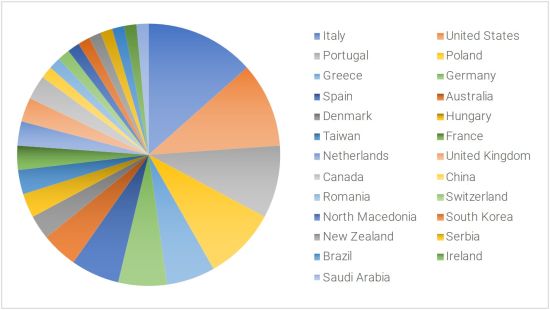Search Articles
Journal:
all
Keyword:
building sustainability
Total
—
42 articles
Editorial 21 Dec 2023
Highlights of Sustainability Editorial Office
2209 Views396 Downloads
Article 16 Nov 2023
Mahdi Mahmoudzadeh
This article is part of the Special Issue Capturing the Sustainable Impact of Early-Stage Business Models.
Highlights of Sustainability
Volume 2 (2023), Issue 4, pp. 283–302
Volume 2 (2023), Issue 4, pp. 283–302
2664 Views1103 Downloads
Article 15 Nov 2023
Irina Di Ruocco
This article is part of the Special Issue Capturing the Sustainable Impact of Early-Stage Business Models.
Highlights of Sustainability
Volume 2 (2023), Issue 4, pp. 259–282
Volume 2 (2023), Issue 4, pp. 259–282
3079 Views1091 Downloads1 Citations
Article 2 Nov 2023
Constanze Trautwein
This article is part of the Special Issue Capturing the Sustainable Impact of Early-Stage Business Models.
Highlights of Sustainability
Volume 2 (2023), Issue 4, pp. 224–240
Volume 2 (2023), Issue 4, pp. 224–240
2969 Views1195 Downloads
Article 6 Oct 2023
Felice Diekel, Vanessa Bach and Matthias Finkbeiner
This article is part of the Special Issue Capturing the Sustainable Impact of Early-Stage Business Models.
Highlights of Sustainability
Volume 2 (2023), Issue 4, pp. 207–223
Volume 2 (2023), Issue 4, pp. 207–223
5734 Views1748 Downloads2 Citations
Article 22 Sep 2023
Carlo Berizzi, Margherita Capotorto, Gaia Nerea Terlicher and Luca Trabattoni
Highlights of Sustainability
Volume 2 (2023), Issue 4, pp. 185–206
Volume 2 (2023), Issue 4, pp. 185–206
3714 Views1040 Downloads1 Citations
Article 7 Aug 2023
Karina Cagarman, Kristina Fajga and Jan Kratzer
This article is part of the Special Issue Capturing the Sustainable Impact of Early-Stage Business Models.
Highlights of Sustainability
Volume 2 (2023), Issue 3, pp. 171–184
Volume 2 (2023), Issue 3, pp. 171–184
3770 Views1260 Downloads4 Citations
Article 21 Jul 2023
Nikolaos Partarakis, Effrosini Karouzaki, Stavroula Ntoa, Anastasia Ntagianta, Emmanouil Zidianakis and Constantine Stephanidis
Highlights of Sustainability
Volume 2 (2023), Issue 3, pp. 138–156
Volume 2 (2023), Issue 3, pp. 138–156
3988 Views961 Downloads
Article 14 Jun 2023
Małgorzata Polkowska
Space tourism is recreational space travel, whether by government vehicles, such as the Russian Soyuz and the International Space Station (ISS), or by vehicles built by private companies. Since the flight of the world’s first space
Space tourism is recreational space travel, whether by government vehicles, such as the Russian Soyuz and the International Space Station (ISS), or by vehicles built by private companies. Since the flight of the world’s first space tourist, American businessman Dennis Tito (28 April 2001), space tourism (orbital) has been slowly growing. Orbital space tourism is very expensive, so a number of private companies have decided to concentrate on building much cheaper suborbital vehicles, designed to take passengers to altitudes of up to 100 km. On 4 October 2004, SpaceShipOne, funded by Virgin Galactic and designed by an American engineer, won the X Prize and, in doing so, ushered in a new era of commercial crewed spaceflight and space tourism. Since then, the design and construction of suborbital spacecraft have become increasingly popular. Such ships, in principle, do not have the ability to cross the imaginary 100 km boundary and enter the Cosmos area. However, space tourists can find themselves weightless for a few minutes. In fact, not only technical but legal difficulties have caused suborbital tourism to develop at a slow pace so far. This article concentrates on some legal challenges regarding space tourism, not going into details about states’ politics and international organizations’ activities.
or
Access Full Article
Highlights of Sustainability
Volume 2 (2023), Issue 2, pp. 100–109
Volume 2 (2023), Issue 2, pp. 100–109
3597 Views3259 Downloads
Article 18 May 2023
Larry Dwyer
Highlights of Sustainability
Volume 2 (2023), Issue 2, pp. 83–99
Volume 2 (2023), Issue 2, pp. 83–99
9122 Views5582 Downloads13 Citations

Volume 2 (2023), Issue 4, pp. 303–304